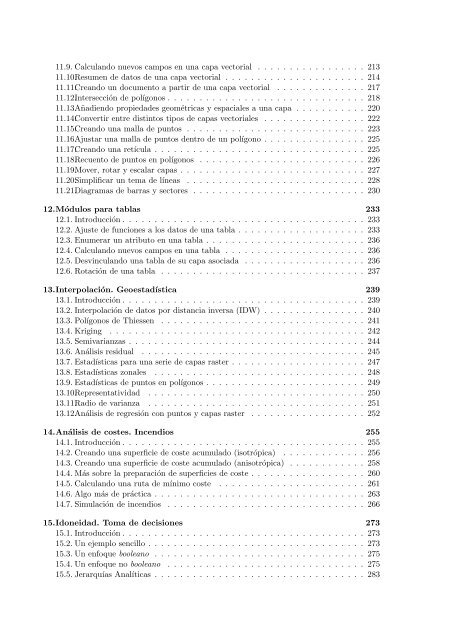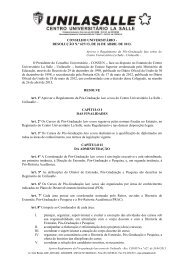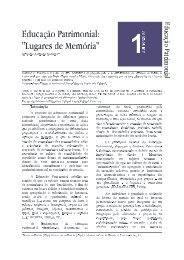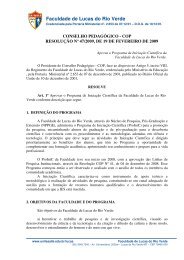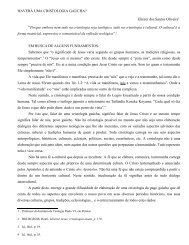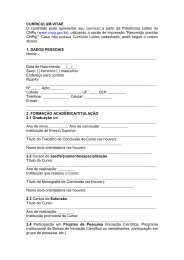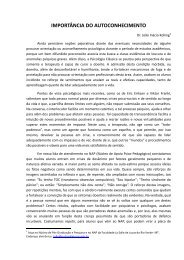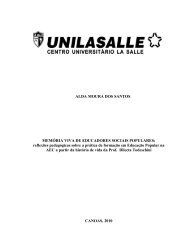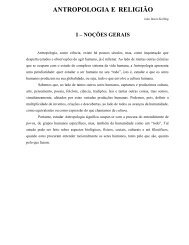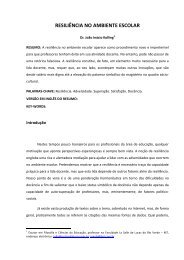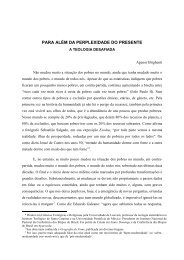Fundamentos de análisis geográfico con SEXTANTE - La Salle
Fundamentos de análisis geográfico con SEXTANTE - La Salle
Fundamentos de análisis geográfico con SEXTANTE - La Salle
Create successful ePaper yourself
Turn your PDF publications into a flip-book with our unique Google optimized e-Paper software.
11.9. Calculando nuevos campos en una capa vectorial . . . . . . . . . . . . . . . . . 213<br />
11.10.Resumen <strong>de</strong> datos <strong>de</strong> una capa vectorial . . . . . . . . . . . . . . . . . . . . . . 214<br />
11.11.Creando un documento a partir <strong>de</strong> una capa vectorial . . . . . . . . . . . . . . 217<br />
11.12.Intersección <strong>de</strong> polígonos . . . . . . . . . . . . . . . . . . . . . . . . . . . . . . . 218<br />
11.13.Añadiendo propieda<strong>de</strong>s geométricas y espaciales a una capa . . . . . . . . . . . 220<br />
11.14.Convertir entre distintos tipos <strong>de</strong> capas vectoriales . . . . . . . . . . . . . . . . 222<br />
11.15.Creando una malla <strong>de</strong> puntos . . . . . . . . . . . . . . . . . . . . . . . . . . . . 223<br />
11.16.Ajustar una malla <strong>de</strong> puntos <strong>de</strong>ntro <strong>de</strong> un polígono . . . . . . . . . . . . . . . . 225<br />
11.17.Creando una retícula . . . . . . . . . . . . . . . . . . . . . . . . . . . . . . . . . 225<br />
11.18.Recuento <strong>de</strong> puntos en polígonos . . . . . . . . . . . . . . . . . . . . . . . . . . 226<br />
11.19.Mover, rotar y escalar capas . . . . . . . . . . . . . . . . . . . . . . . . . . . . . 227<br />
11.20.Simplificar un tema <strong>de</strong> líneas . . . . . . . . . . . . . . . . . . . . . . . . . . . . 228<br />
11.21.Diagramas <strong>de</strong> barras y sectores . . . . . . . . . . . . . . . . . . . . . . . . . . . 230<br />
12.Módulos para tablas 233<br />
12.1. Introducción . . . . . . . . . . . . . . . . . . . . . . . . . . . . . . . . . . . . . . 233<br />
12.2. Ajuste <strong>de</strong> funciones a los datos <strong>de</strong> una tabla . . . . . . . . . . . . . . . . . . . . 233<br />
12.3. Enumerar un atributo en una tabla . . . . . . . . . . . . . . . . . . . . . . . . . 236<br />
12.4. Calculando nuevos campos en una tabla . . . . . . . . . . . . . . . . . . . . . . 236<br />
12.5. Desvinculando una tabla <strong>de</strong> su capa asociada . . . . . . . . . . . . . . . . . . . 236<br />
12.6. Rotación <strong>de</strong> una tabla . . . . . . . . . . . . . . . . . . . . . . . . . . . . . . . . 237<br />
13.Interpolación. Geoestadística 239<br />
13.1. Introducción . . . . . . . . . . . . . . . . . . . . . . . . . . . . . . . . . . . . . . 239<br />
13.2. Interpolación <strong>de</strong> datos por distancia inversa (IDW) . . . . . . . . . . . . . . . . 240<br />
13.3. Polígonos <strong>de</strong> Thiessen . . . . . . . . . . . . . . . . . . . . . . . . . . . . . . . . 241<br />
13.4. Kriging . . . . . . . . . . . . . . . . . . . . . . . . . . . . . . . . . . . . . . . . 242<br />
13.5. Semivarianzas . . . . . . . . . . . . . . . . . . . . . . . . . . . . . . . . . . . . . 244<br />
13.6. Análisis residual . . . . . . . . . . . . . . . . . . . . . . . . . . . . . . . . . . . 245<br />
13.7. Estadísticas para una serie <strong>de</strong> capas raster . . . . . . . . . . . . . . . . . . . . . 247<br />
13.8. Estadísticas zonales . . . . . . . . . . . . . . . . . . . . . . . . . . . . . . . . . 248<br />
13.9. Estadísticas <strong>de</strong> puntos en polígonos . . . . . . . . . . . . . . . . . . . . . . . . . 249<br />
13.10.Representatividad . . . . . . . . . . . . . . . . . . . . . . . . . . . . . . . . . . 250<br />
13.11.Radio <strong>de</strong> varianza . . . . . . . . . . . . . . . . . . . . . . . . . . . . . . . . . . 251<br />
13.12.Análisis <strong>de</strong> regresión <strong>con</strong> puntos y capas raster . . . . . . . . . . . . . . . . . . 252<br />
14.Análisis <strong>de</strong> costes. Incendios 255<br />
14.1. Introducción . . . . . . . . . . . . . . . . . . . . . . . . . . . . . . . . . . . . . . 255<br />
14.2. Creando una superficie <strong>de</strong> coste acumulado (isotrópica) . . . . . . . . . . . . . 256<br />
14.3. Creando una superficie <strong>de</strong> coste acumulado (anisotrópica) . . . . . . . . . . . . 258<br />
14.4. Más sobre la preparación <strong>de</strong> superficies <strong>de</strong> coste . . . . . . . . . . . . . . . . . . 260<br />
14.5. Calculando una ruta <strong>de</strong> mínimo coste . . . . . . . . . . . . . . . . . . . . . . . 261<br />
14.6. Algo más <strong>de</strong> práctica . . . . . . . . . . . . . . . . . . . . . . . . . . . . . . . . . 263<br />
14.7. Simulación <strong>de</strong> incendios . . . . . . . . . . . . . . . . . . . . . . . . . . . . . . . 266<br />
15.Idoneidad. Toma <strong>de</strong> <strong>de</strong>cisiones 273<br />
15.1. Introducción . . . . . . . . . . . . . . . . . . . . . . . . . . . . . . . . . . . . . . 273<br />
15.2. Un ejemplo sencillo . . . . . . . . . . . . . . . . . . . . . . . . . . . . . . . . . . 273<br />
15.3. Un enfoque booleano . . . . . . . . . . . . . . . . . . . . . . . . . . . . . . . . . 275<br />
15.4. Un enfoque no booleano . . . . . . . . . . . . . . . . . . . . . . . . . . . . . . . 275<br />
15.5. Jerarquías Analíticas . . . . . . . . . . . . . . . . . . . . . . . . . . . . . . . . . 283


